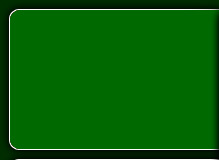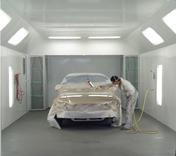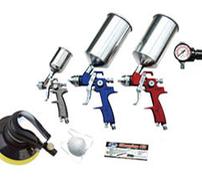MENU
New Iowa Fee for Air Permits including Spray Booths
As of January 15, 2016, new fee schedule for Iowa Department of Natural Resources (DNR) air quality construction permit applications and notifications began for new or changed permits.
New Form AF - Construction Permit Application Fee is new to the permit application process and required for all minor sources construction permit applications including permit templates. The form allows facilities to input data to determine the correct fee to send with your permit application.
Minor Source Fees - These new fees apply to two categories, air quality construction permits applications and notifications. The fee for construction permit applications is $385 per application for each required permit. The Iowa DNR issues a construction permit to each emission point so the fee will be based on the number of permits the facility is applying for. Notifications include permit registrations (group 1 grain elevators), permit-by-rule (spray booths) and permit templates (i.e., concrete batch plants, aggregate processing and asphalt plants) are $100 per application.
These changes impact businesses if they:
- - modify current permitted equipment,
- - require a permit for existing equipment, or
- - install new equipment at an existing facility.
If a new facility, the business should contact the DNR at 1-877-247-4692 to determine permitting requirements and what fees might apply.
Regulations for Auto Body Painting
This rule impacts automotive body shop painting operations that use paint that contain Hazardous Air Pollutants (HAPs). This rule will not regulate hobbyists or facilities that are using paints that do not contain the listed HAPs. Training is required every 5 years. So many collision repair shops will need updated training in 2016. The journey begins with these two steps:
Step 1: Compliance
At this point all collision repair facilities should be in compliance with the NESHAP 6H Rule and verified that your auto body shop has the appropriate state air quality permit in place. This permit is generally required to conduct a paint operation and emit air pollution in any given state. It is usually obtained at the start of operation, or at such time that the shop becomes aware an air permit is required in their state.
In Iowa you must have either a one-gallon or three-gallon Permit-by-Rule or an Air Quality Construction permit from the Iowa DNR. Verify your permit status at: http://www.iowadnr.gov/InsideDNR/RegulatoryAir/ConstructionPermits/PermitSearch.aspx then select "SPRAY BOOTH" tab and use the search options.
Action Item: Verify or obtain the appropriate state air permit for auto body painting in your state. Download the Iowa form here -----
Step 2: Final Notification Form to Governing Agency by March 11, 2011
Shops subject to the requirements of the new NESHAP 6H Rule must make FINAL NOTIFICATION to the local governing agency or regional EPA by March 11, 2011. Some Final Notification Forms are available by state and are to be completed and submitted to the applicable agency or agencies by the deadline. (Some states require the form to be submitted to the state Air Quality Division and the Regional EPA Office.) Many states did NOT accept NESHAP authority so Final Notification forms should be sent to the regional EPA office. See State Delegation List at:http://www.epa.gov/collisionrepair/pdfs/statedelegations.pdf
The information on locations and resources such as compliance workshops and state-specific fact sheets are developing quickly. The CCAR-GreenLink “Paint Rule” page has articles about the compliance process available for download. Those articles include training material for gun set up and spray techniques training as required by the rule. In-house training CAN be conducted. The shop CAN issue certificate to it's own painters. The EPA collision Repair website has a sample certificate. This process culminates with the Final Notification due March 11, 2011, after having met all requirements.
The Iowa FINAL notification form can be found downloaded from here:
The EPA Example notification form can be found at the EPA website: http://www.epa.gov/collisionrepair/pdfs/6h_compliance_ex.pdf
Check the CCAR-GreenLink “Paint Rule” page for more information.
Action Item: Make Final Notification to the applicable agency by March 11, 2011.
Additional Preparation (Recommended)
The HAPs are listed on the Material Safety Data Sheet (MSDS) for paint used at the facility. Some paint systems are designed to be HAP-free, such as a waterborne paint system. Most auto body paints, however, contain HAPs and having just one paint, primer or clear coat with HAPs in the shop means that the new NESHAP 6H Rule applies to the shop. The best way to verify is to review the MSDS for all paint. If the HAP is listed on the MSDS, the paint contains HAPs above the regulatory threshold and the rule applies to the shop.
An MSDS System is required by the U.S. Department of Labor, Occupational Safety and Health Administration (OSHA) for facilities with products that may pose a risk to employees. Setting up an MSDS system is not complicated: use a three-ring binder (red binder is the industry norm) to hold an inventory of all products and the corresponding MSDS for each product. Make the MSDS system available to all employees and keep it up-to-date with new product data. Download How to Set Up an MSDS System.
Action Item: Update or develop an MSDS System in hard copy such as a three-ring binder or electronic format and make it available to employees.
Paint Rule Overview
On January 9, 2008, the US EPA issued the final rule for 40CFR63 Subpart HHHHHH of the National Emission Standards for Hazardous Air Pollutants (NESHAP) for Paint Stripping and Miscellaneous Surface Coating Operations at Area Sources. The purpose of this rule is to reduce emissions of lead, nickel, cadmium, chromium and manganese. These chemicals are designated hazardous air pollutants (HAP) known or suspected to cause cancer and other adverse health effects and can be found in paint used in the automotive refinishing industry.
The rule only applies if coatings contain targeted HAPs:
• Lead (Pb), (> 0.1 percent)
Lead (Pb), (> 0.1 percent)
• Manganese (Mn), (> 1.0 percent)
Manganese (Mn), (> 1.0 percent)
• Nickel (Ni), (> 0.1 percent)
Nickel (Ni), (> 0.1 percent)
• Cadmium (Cd), (> 0.1 percent)
Cadmium (Cd), (> 0.1 percent)
• Chromium (Cr), (> 0.1 percent)
Chromium (Cr), (> 0.1 percent)
This new rule will impact many facets of a regulated facility, including where painting takes place, the filters used, the paint guns that are used, how paint guns are cleaned, and the training of painters. The rule requires all spray-applied painting to be conducted in a paint booth. Spray-applied painting outside of a paint booth will be prohibited. This may impact how a company moves product through its facility. All exhaust filters used in the paint booths will have to be at least 98% efficient and will be required to have documentation that they meet this efficiency.
All coatings will be required to be applied using the following approved paint gun technologies:
• High volume, low pressure (HVLP)
• Electrostatic
• Airless
• Air-assisted airless
If a facility wishes to use another technology it must be approved by the Administrator, which in Iowa is the Iowa Department of Natural Resources. More information on the new rule is available at http://www.epa.gov/collisionrepair/ or for Iowa at http://www.iowadnr.gov/air/prof/NESHAP/.
Paint guns will be required to be cleaned by hand or in a fully enclosed gun washing machine. Atomizing solvent through the paint gun for cleaning purposes will no longer be allowed, unless it is in a fully enclosed gun washing machine.
The one requirement that may have the most long-term impact is that all painters will be required to go through a specific training program every five years. This training must cover:
• Spray gun equipment selection, set up, and operation
• Best spray technique to improve transfer efficiency and minimize overspray
• Routine booth and filter maintenance, filter selection and installation
• Compliance with the rule
For a facility to be in compliance, it must meet all these requirements and must document compliance with training records, filter and paint gun documentation, and copies of regulatory reports. Existing facilities will be required to complete final notification of compliance status by March 11, 2011. New facilities are required to complete an initial notification form and a notification of compliance status within 180 days after startup.
Collision Repair - Auto Body Shops





